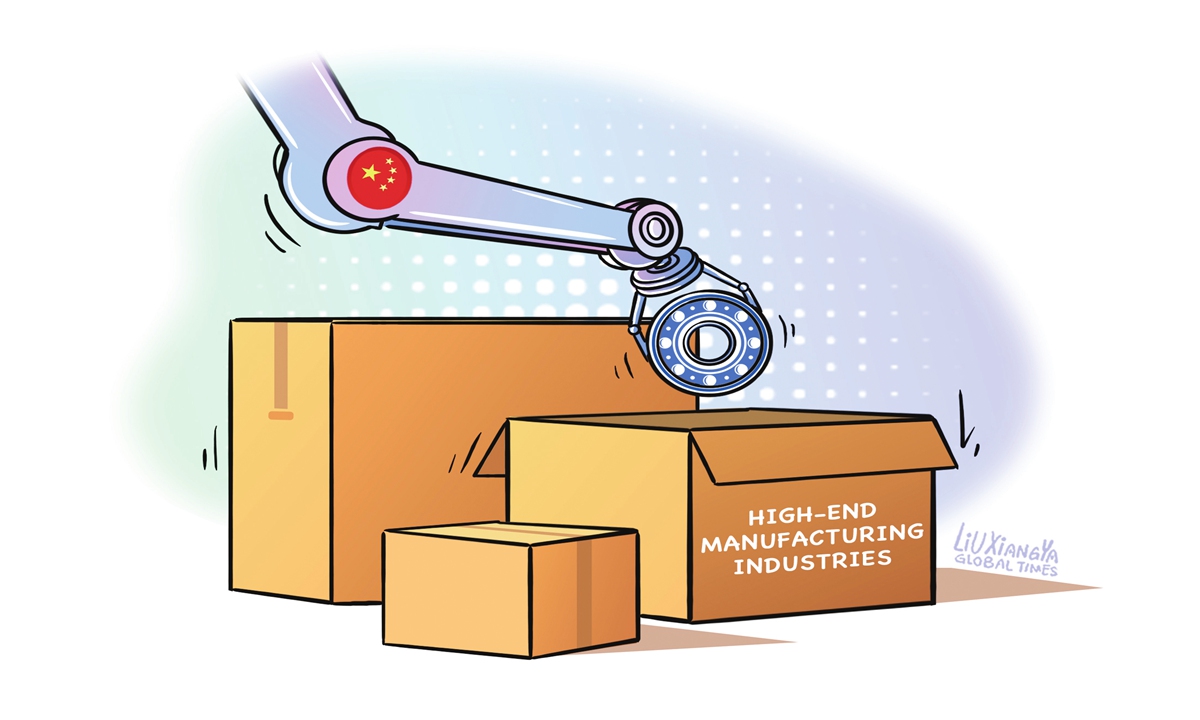
Illustration: Liu Xiangya/Global Times
Walmart, the world's largest retailer, is importing more goods to the US from India and reducing its reliance on China as it looks to cut costs and diversify its supply chains, Reuters reported on Wednesday.
Does this add to evidence for the hot topic of whether India can replace China as a new world factory? The answer may not be what many people think.
According to bill of lading figures shared with Reuters by data firm Import Yeti, Walmart shipped one-quarter of its US imports from India between January and August this year, compared with just 2 percent in 2018. For the Indian economy, it is apparently good news, showing that India will become a key part of multinational corporations' efforts to build new manufacturing capacity.
Andrea Albright, Walmart's executive vice president of sourcing, was quoted by Reuters as saying that Walmart is importing goods ranging from toys and electronics to bicycles and pharmaceuticals from India to the US. Packaged food, dry grains and pasta are also popular imports from India.
This is part of the bigger picture of India's overall exports. According to official data, electronic goods and agricultural exports saw robust growth this year, with India's electronic goods exports growing 26.3 percent in August alone and 35.2 percent from April-August.
Although India's overall merchandise exports shrank 6.86 percent in August, its export growth in labor-intensive products deserves attention and poses a challenge to China's low-end manufacturing product exports.
According to Reuters, 60 percent of Walmart's shipments still came from China between January and August this year, but the proportion was down from 80 percent in 2018.
In the low-end industry chain, especially the labor-intensive sectors, India is on the rise, which will promote a further restructuring of the Asia-Pacific supply chain.
Some people wonder whether India's rise in low-end industries will replace China in the manufacturing sector. In my opinion, the answer is negative.
The key is that China is moving up the value chain. Its exports of machinery equipment, intermediate products and core components have increased, but the growth of high-end manufacturing exports is not reflected in Walmart's purchase list.
For instance, Chinese customs data showed that the country's bearing exports increased from $2.83 billion in January-August 2018 to $3.39 billion in the same period of 2023. Voltage transformer exports increased from $2.14 billion to $3.22 billion, and electric vehicle exports increased from $261 million to $25.82 billion in the same period.
Of China's exports to India, some fall into the categories of machinery, equipment and key components. It is precisely with these items that India assembles electronic products and exports them.
As a result, although the US seems to try to reduce its imports of goods from China while shifting toward India and Southeast Asian countries, those countries actually need more made-in-China machinery, equipment and components. So, countries like India serve as bridges connecting the industry chains of China and the US.
In the next decade, Chinese companies are expected to further move up the supply chain to focus more on advanced manufacturing domestically. It is inevitable to transfer some labor-intensive work overseas. This is also a process of industry upgrading in China.
If India can put aside its zero-sum thinking and geopolitical biases, it will gain more dividends in the restructuring of the Asia-Pacific industry chain and receive more manufacturing capacity transfers.
As long as China continues to move up the supply chain and strengthen technological innovation, there is no need to worry about the proportion of China in Walmart's purchase list, whether it's 80 percent or 60 percent. India is unlikely to "replace China" in the short term. As for the industry chain, complementarity between China and India is increasing. If India can put aside its geopolitical obsessions, China-India economic and trade cooperation can reach new heights.
The author is a reporter with the Global Times. bizopinion@globaltimes.com.cn




